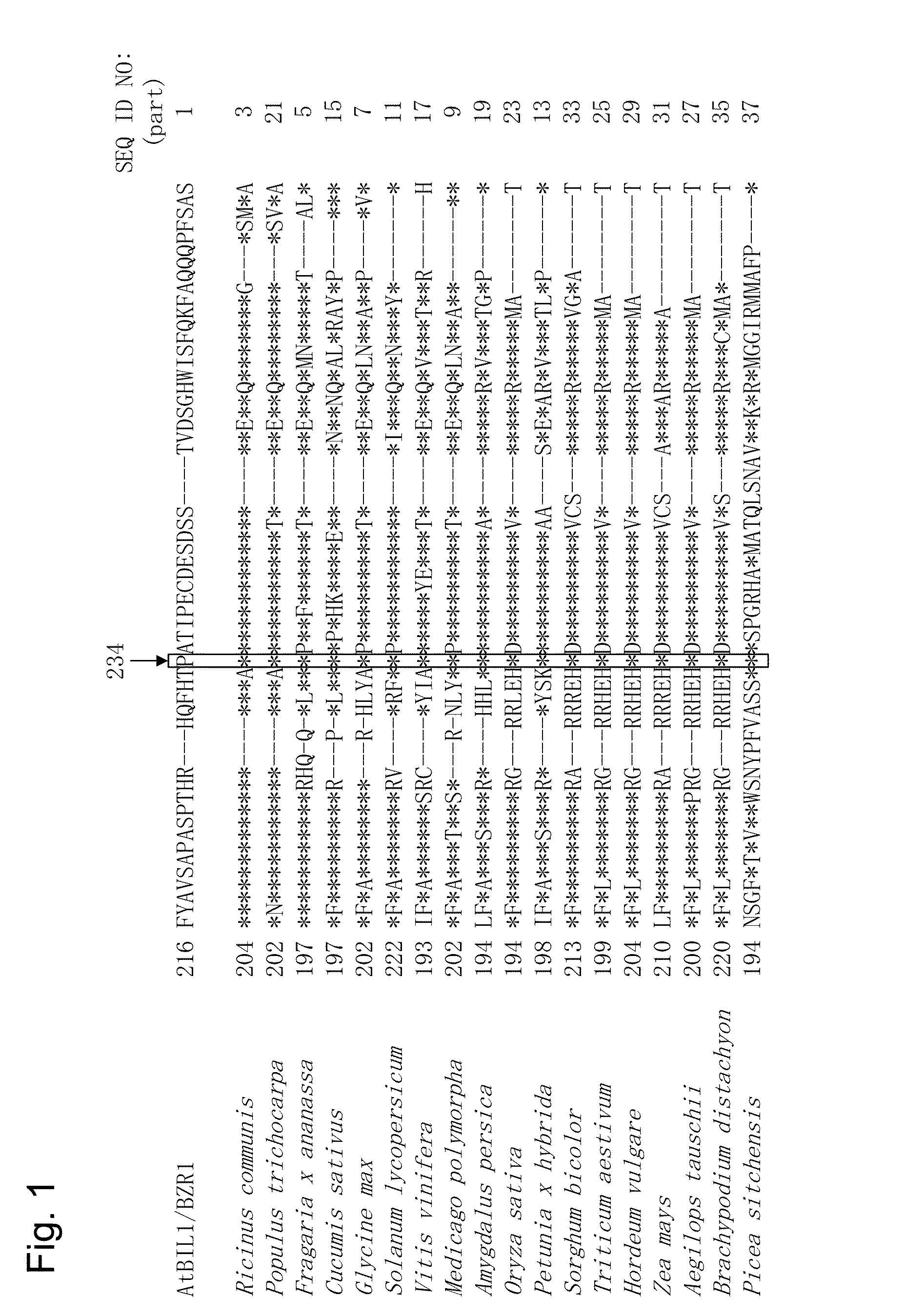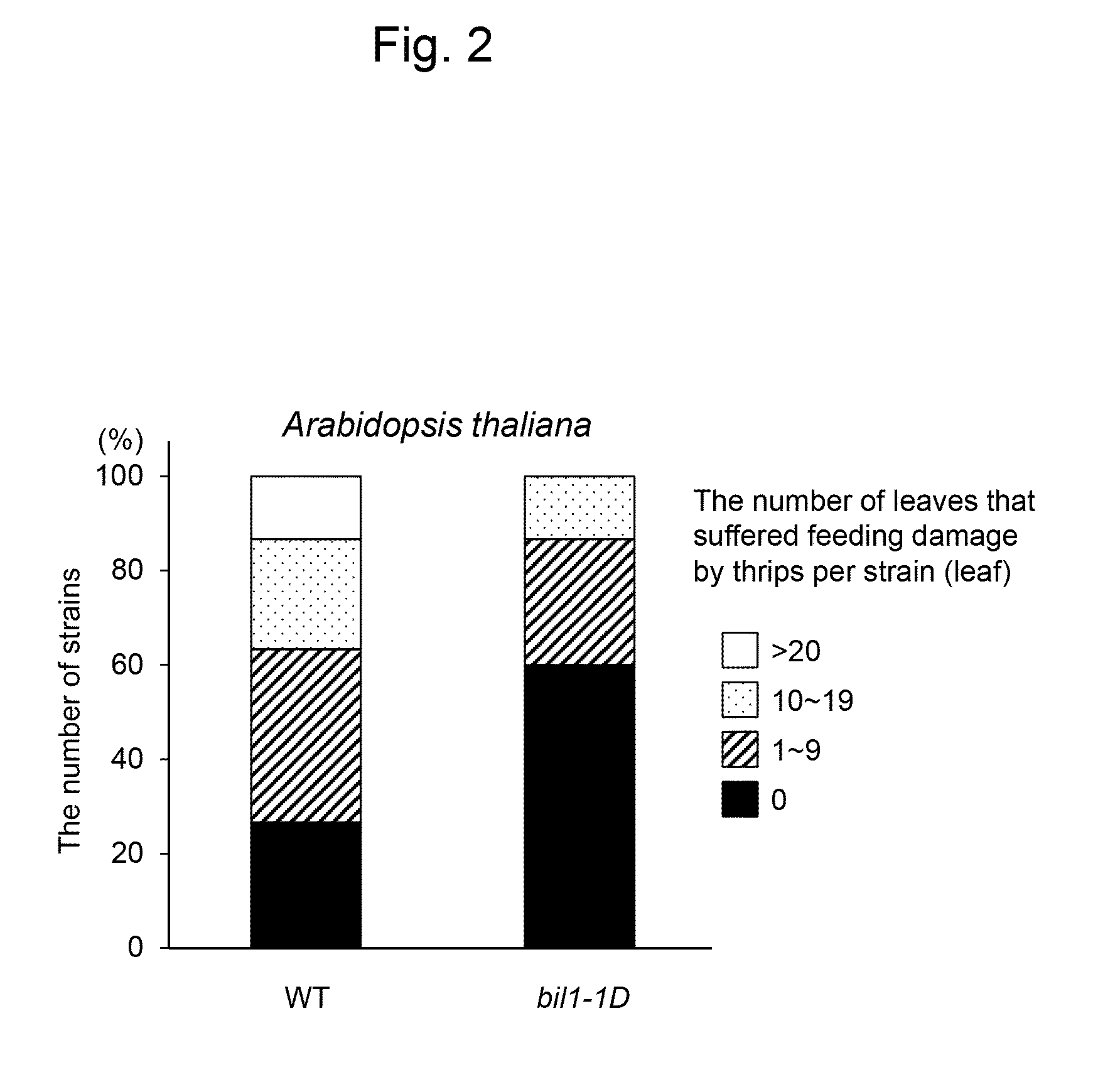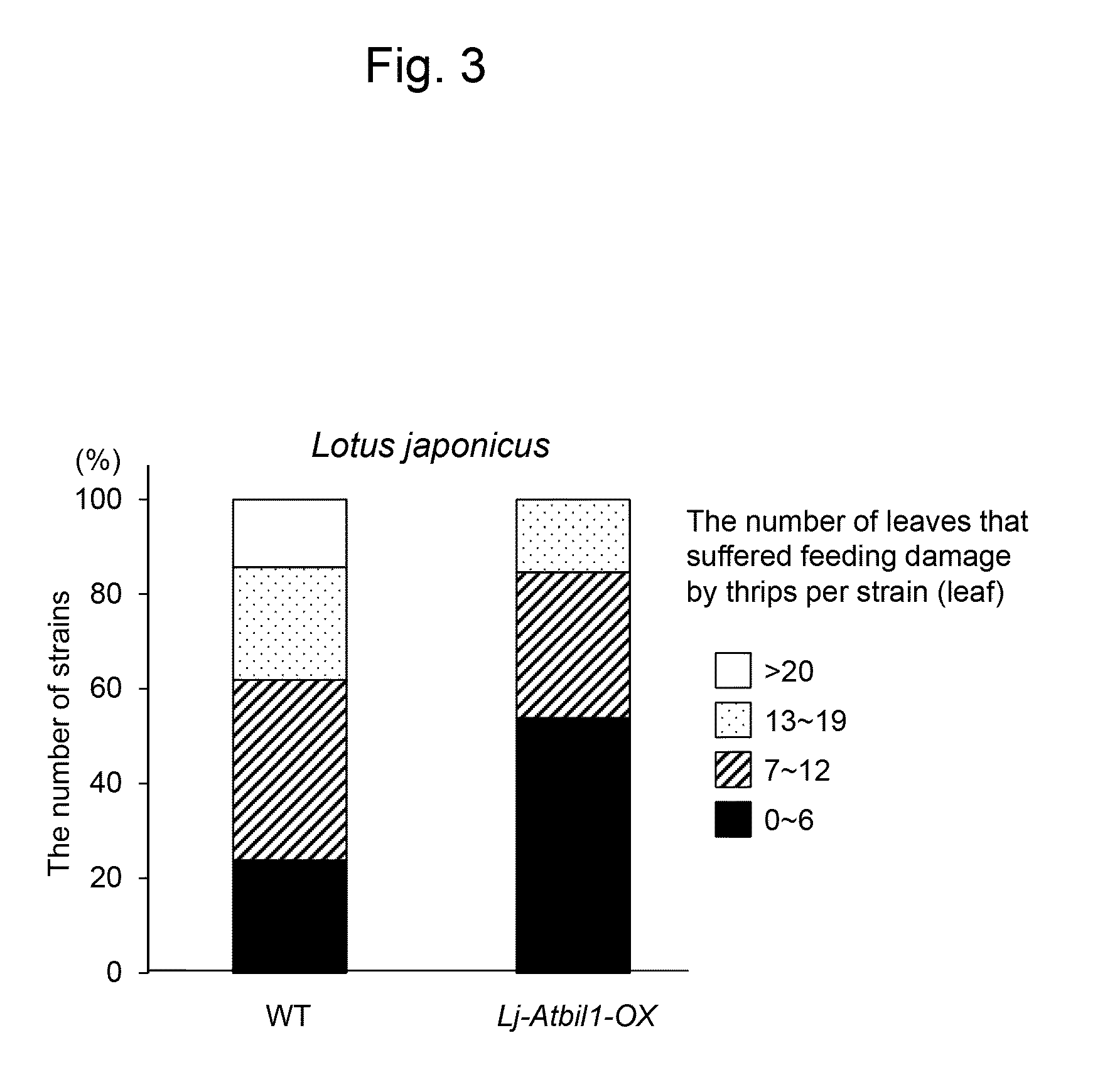AGENT FOR IMPARTING RESISTANCE TO FEEDING DAMAGE BY PHYTOPHAGOUS ARTHROPOD (As Amended)
- Summary
- Abstract
- Description
- Claims
- Application Information
AI Technical Summary
Benefits of technology
Problems solved by technology
Method used
Image
Examples
example
Example 1
Verification of Resistance to Feeding Damage by Phytophagous Arthropod in Plant Resistant to Feeding Damage (1)
[0121](Purpose)
[0122]The plant resistant to feeding damage of the present invention was examined for its resistance to feeding damage by a phytophagous arthropod.
[0123](Material)
[0124]Arabidopsis thaliana was used as a recipient plant. A bil1-1D strain was used as the plant resistant to feeding damage of the present invention, and ecotype Columbia (Col-0) was used as a control wild strain (WT). The bil1-1D strain is a gain-of-function mutant that has the P234L-Atbil1 gene and stabilizes the BIL1 protein resulting in the high accumulation thereof.
[0125]Adults of Thrips tabaci were used as the phytophagous arthropod.
[0126](Method)
[0127](1) Cultivation of Arabidopsis thaliana
[0128]Each Arabidopsis thaliana was inoculated onto a medium containing ½ Murashige & Skoog (MS) medium (Duchefa Biochemie BV.), 0.8% phyto agar (Duchefa Biochemie B.V.), and 1.5% sucrose, and cu...
example 2
Verification of Effect of Imparting Resistance to Feeding Damage by Agent for Imparting Resistance to Feeding Damage—(1)
[0133](Purpose)
[0134]The administration of the agent for imparting resistance to feeding damage according to the present invention to a desired plant was confirmed to allow the plant to acquire resistance to feeding damage by a phytophagous arthropod.
[0135](Material)
[0136]A Lotus japonicus ecotype Gifu strain was used as a wild strain serving as a recipient plant.
[0137]As in Example 1, imagos of Thrips tabaci were used as the phytophagous arthropod.
[0138](Method)
[0139](1) Preparation of Agent for Imparting Resistance to Feeding Damage According to Present Invention
[0140]A gene expression vector containing the P234L-Atbil1 gene, constituting the agent for imparting resistance to feeding damage according to the present invention, was constructed. P234L-Atbil1 cDNA was prepared by PCR from the cDNA of the Arabidopsis thaliana bil1-1D strain having the P234L point muta...
example 3
Verification of Resistance to Feeding Damage by Phytophagous Arthropod in Plant Resistant to Feeding Damage—(2)
[0150](Purpose)
[0151]The plant resistant to feeding damage of the present invention was examined for its resistance to feeding damage by a phytophagous arthropod different from that in Examples 1 and 2.
[0152](Material and Method)
[0153]The basic materials and method followed Example 1, so that only points different from the description of Example 1 will be described here. In this Example, adults of Frankliniella occidentalis were used instead of Thrips tabaci used as the phytophagous arthropod in Examples 1 and 2. The feeding damage by Frankliniella occidentalis was evaluated by adjacently placing 6 pots each of the wild strains and the bil1-1D strains of Arabidopsis thaliana cultured for 3 weeks, in a cage of pastured Frankliniella occidentalis, and cultivating the plants for 2 weeks, followed by the visual observation of the feeding damage status.
[0154](Results)
[0155]The r...
PUM
| Property | Measurement | Unit |
|---|---|---|
| Fraction | aaaaa | aaaaa |
| Electrical resistance | aaaaa | aaaaa |
Abstract
Description
Claims
Application Information
 Login to View More
Login to View More - R&D
- Intellectual Property
- Life Sciences
- Materials
- Tech Scout
- Unparalleled Data Quality
- Higher Quality Content
- 60% Fewer Hallucinations
Browse by: Latest US Patents, China's latest patents, Technical Efficacy Thesaurus, Application Domain, Technology Topic, Popular Technical Reports.
© 2025 PatSnap. All rights reserved.Legal|Privacy policy|Modern Slavery Act Transparency Statement|Sitemap|About US| Contact US: help@patsnap.com



